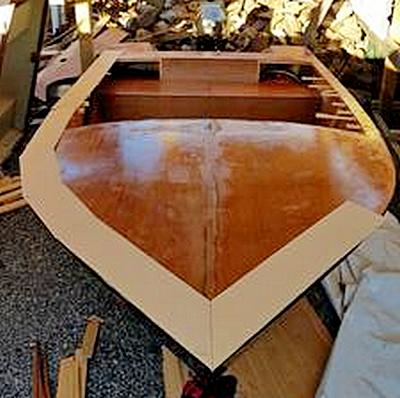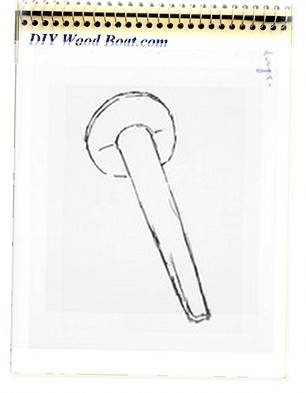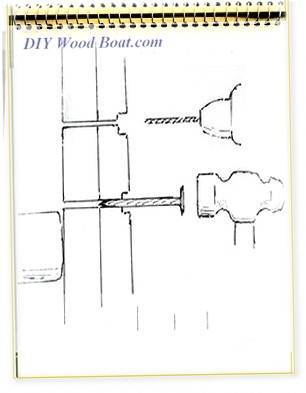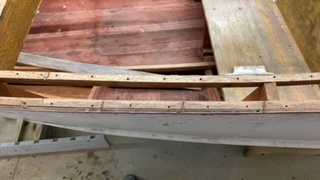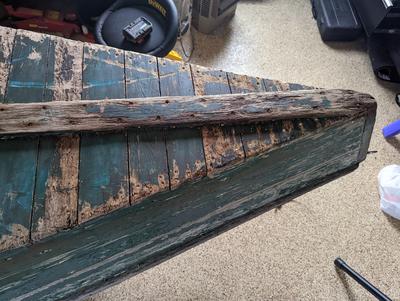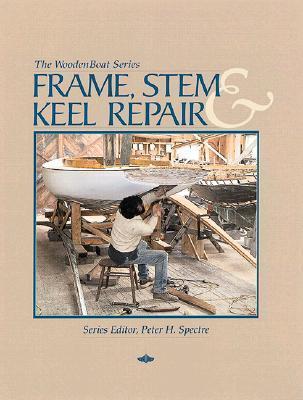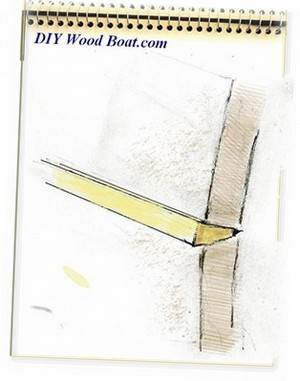Notes on Sealants and Bedding Compounds
It goes without saying that sealants and bedding compounds are uses to prevent leaks.
The problem is, that today we have such a bewildering range of products to choose from.
And each one has its own purpose and characteristics.
Which one to use depends on what you're going to do with it and where.
Is the use below the waterline?
Is flexibility or strength more important?
How quickly do you want it to cure?
Sealant Types
There are three main types of marine sealants, Silicones, Polysulfides, and Polyurethanes.
All of them are designed to form a flexible, water and air-tight seal between surfaces and they can help provide electrical and chemical insulation.
There has even been some recent advances in flexible epoxy technology that are starting to increase their utility in boat construction.
Silicone
Silicone is perhaps the most basic of the three.
It is versatile, quick and easy to use, elastic, highly resistant to chemicals and excellent for isolating dissimilar metals.
While they are very flexible, most silicones don't have much bond strength.
They should be thought of as more of a gasket material than a sealant as they depend on compression from mechanical fasteners to maintain their grip.
Perhaps their biggest disadvantage is that silicone leaves a residue
behind that’s difficult to remove and to which nothing will adhere,
including fresh silicone or paint.
You can't sand or paint it and it’s bond to raw wood is not very good.
However, it tends to be reasonably chemically impervious to fuels and oils.
The cure rate is quite fast.
A
marine-grade silicone, unlike the household-use silicone, will have UV
inhibitors and tend to retain its flexibility much longer.
Note that some silicones are not intended for use below the waterline.
Polysulfides
Polysulfides are perhaps the most versatile sealants available.
While not as elastic as silicones, they bond better to most surfaces but oily woods (such as teak) should be primed first.
Polysulfides are not recommended for bonding plastic, particularly acrylic, polycarbonate and vinyl, as they will melt some types.
Cure times are dependent on temperature and humidity and generally can take one to three days to cure completely.
But they can be sanded and they won’t contaminate surfaces to be painted, once the solvents have evaporated.
They are not particularly suited to electrical insulation and should not be used between two items of dissimilar metals.
Polysulfides come in one and two-part application methods.
Two-parters are popular for caulking teak decks or for bedding wood parts like rub rails and cockpit coamings.
One-part polysulfides are easy to use and durable, but cure slowly.
Polyurethanes
Polyurethane is recommended for permanent bonding because of its enormous adhesive strength.
So, if you think you might ever want to take the pieces apart again, don’t use polyurethane-based sealants.
However, they don’t adhere well to many types of plastic, such as ABS and Lexan.
They also have poor resistance to oil and the acids used in products such as teak cleaners
Mineral spirits, kerosene or some other solvent can be used to remove uncured polyurethane sealant.
However, it is very difficult to remove once cured.
‘Anti Bond 2015’ has been developed to aid in the removal of cured polyurethane.
Polyether
One of the most exposure resistant sealants, unaffected by teak oils or
cleaners, remains permanently flexible, and is sandable.
West Marine Multi-Caulk is an excellent choice for wood, metal, or fiberglass but will attack some plastics.
However, 3M 4000UV is rated as being safe for all plastics.
Flexible Epoxy
New epoxy variations, like Pettit FlexPoxy and WEST System G-Flex, are more flexible and less brittle than traditional epoxies.
They can be used above or below the waterline, and after curing can be drilled and tapped, sawn, planed, filed, screwed, or nailed without fracturing.
They cure faster than some polyurethanes, adhere well to many materials and may be another alternative to consider when you want a permanent but somewhat flexible bond.
When it's applied to overhead or vertical surfaces, it will not sag or run.
It
doesn't shrink or crack due to overheating while curing, and it can be
pre-tinted with all types of alkyd, polyurethane-, or epoxy-based paints
or tints without losing significant strength.
This makes it useful in places where the greatest strength in a bond line is necessary.
It
is expensive but certain repairs on wooden hulls could benefit,
particularly with their ability to hold a fastener and it might be good
for a quick-and-dirty repair patch.
Bedding Compounds
Bedding compounds are often used for waterproofing joints such as in the keel, keelson, stem, sternpost, transom, battens and other hull members that will be mechanically fastened together.
These bedding compounds are also recommended for use as a double planking compound in the construction of double planked hulls where canvas is not used.
‘Dolfinite’ and the ‘2005 Series’ are flexible, semi-paste type, slow oxidizing waterproof compounds that remain flexible for years, will not dry out and will not destroy parts should you ever have the need to take them apart at some later date.
Thinning is not normally required.
Use a serrated trowel to apply a liberal coat to one side before joining.
Other Mastics
Oil based mastics will go hard eventually, especially on timber/timber joints as the wood will absorb much of the oil.
Priming the surfaces first will help it last longer.
Butyl rubber mastics and tape and builder's mastic are quite popular with some folk.
White lead paste is a traditional bedding compound that will benefit from a little blob of grease mixing in.
Stockholm tar was used to waterproof hulls and rigging back in the days of wooden ships, it is worth having if only for its pleasant aroma.
The old, traditional products worked reasonably well within the technology of their day and they demanded no more maintenance than did the rest of the vessel.
But because they were organic, they would eventually dry out or decay.
Application
To get the best results from any of these sealants they must be applied correctly.
Here are some basic rules that need to be followed.
First, make sure that all the surfaces are clean and dry.
Peel
or scrape away every bit of the old sealant and wipe down the mating
surfaces with a solvent or cleaner such as acetone or Life-Calk Solvent.
The old rule of thumb, “When in doubt, prime it out”, works just as well for sealants as it does for paint.
Prime oily woods with a product such as ‘Life Calk Primer’ or ‘Sika's 203 Primer’.
If you very slightly countersink screw and bolt holes it will allow room for an extra bit of ‘gasket’.
Apply a liberal dollop of the caulk so that it will squeeze out around the entire perimeter of the joint.
Without that ‘good squeeze-out’ the joint will likely leak, this is not the place to economize.
Snug the fasteners down but don’t over-tighten them, tighten just enough that the mating surfaces are pulled together, both are bedded in the sealant and the caulk squeezes out evenly all around.
Then leave the components alone for a few hours until the sealant cures.
Then, when you come back and tighten the fastening, there will be a nice solid gasket under the part, which will compress and keep the water out.
If it is a through bolt fastening then, ideally, you should tighten the nut on the inside, not the bolt head on the outside, turning the bolt can break the seal around it.
You can then remove any excess by slicing it off with a razor blade or utility knife.
The various sealants require different periods of time to cure properly.
The most tenacious and best-performing products tend to take the longest time to cure, anything from 5 to as much as 20 days for a complete cure.
Moisture in the air or dew on the decks may accelerate the cure of
products like polysulfides or polyurethanes, this can be assisted by
misting water onto the exposed mastic.
However, in the end,
follow the manufacturers' recommendations, be mindful of the materials
involved and the amount of bond strength you need, and don't be afraid
to be liberal with the stuff.
Recommendation Chart
The chart below is a quickie guide to help choose the type that best suits your application.
However, selection charts tend to deal in general cases, so double-check the manufacturer's recommendations as well.
E = Excellent, G = Good, S = Satisfactory, X = Not Recommended
Uses |
Polyurethane |
Polysulfide |
Silicone |
| Wood to Wood | E | E | S |
| Deck Seams | X | E | X |
| Underwater, Hull Seams | S | E | X |
| Deck to Hull Joints | E | E | G |
| Through Hull Fittings | E | E | S |
| ABS & Lexan Plastics to Wood | X | X | S |
| Plastic Hardware to Wood | X | X | S |
| Metal to Wood | G | E | S |
| Glass to Wood | G | E | S |
| Electrical Insulation | S | G | E |
| Sand-ability | S | E | X |
| Paint-ability | E | E | X |
| Chemical Resistance | S | E | S |
| Adhesion | E | G | S |
NATIVE ASYNC


